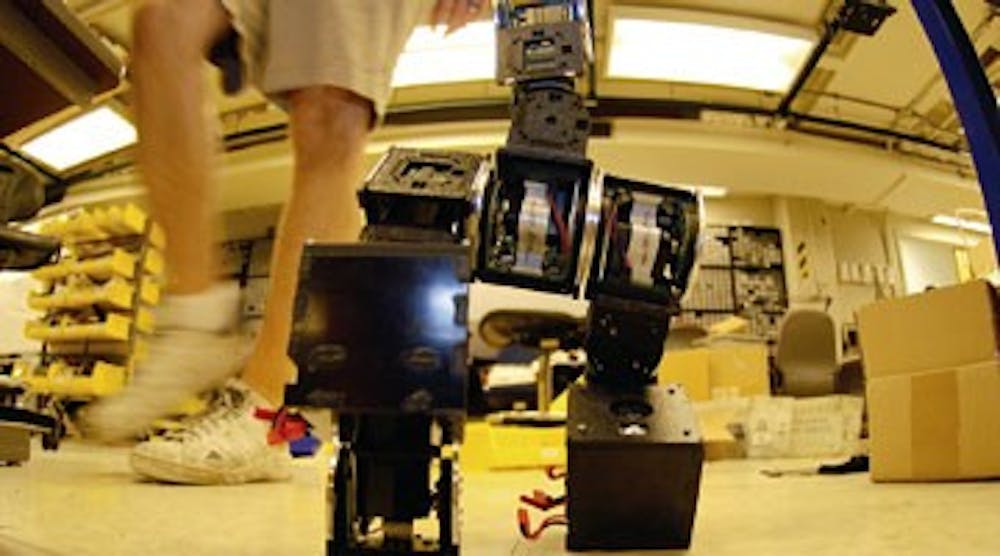
A robot that reconstructs itself after exploding. It sounds like an unstoppable cyborg played by a certain state governor, but the ckBot has a long way to go before it can come close to exterminating the human race.
The ckBot is the brainchild of Mechanical Engineering professor Mark Yim and Computer Science professor C.J. Taylor. It is a robot that can walk, crawl and re-assemble itself. It can also rearrange itself to change how it moves.
Both Yim and Taylor said the ckBot has potential for planetary exploration and search and rescue work in the event of a building collapse.
"It's useful for any situation where the system needs to adapt and reconfigure - situations when you don't know what you'll find," Yim said.
The ckBot is officially known as a "modular reconfigurable robot system," according to Yim. Modular robotics is the creation of a larger robot from smaller components.
Taylor said most modular robots have to be assembled by someone. "The challenge was making a modular robot that could assemble itself," he said .
The smaller components of the system, called clusters, function somewhat independently of one another.
For the ckBot, a cluster is made up of five modules: a camera and four sections for movement. The ckBot can function with up to five of these clusters, which are magnetically connected. This allows it to walk like a quadruped, crawl like an inchworm and roll on wheels.
The ckBot was recently exhibited in Chicago at WIRED NextFest, a showcase of global innovations including sustainable design, next-generation health care and robotics. The exhibition featured a three-cluster version of the robot that can crawl and walk on two legs.
Taylor works with smart cameras - small self-contained systems that can orient themselves. Yim made the modules that allow the robot to move.
Their collaboration began a year ago and their first publication debuted at the International Conference on Intelligent Robots and Systems last October in San Diego. Yim described it as "a classic example of people coming together to do something they couldn't do otherwise."
The robot has been a work in progress for almost four years, and the cameras were added two years ago. The ckBot is a continual work in progress, the professors said.
Babak Shirmohammadi, a computer science Ph.D. student and one of the students who built the robot, said that it could always be improved.
"The next step is adding more clusters and making it smaller and cheaper," he said.
Taylor also said it could eventually be possible to make clusters indistinguishable from each other.
"An interesting challenge would be writing a program for it that has to act like DNA," he said. This would give each part the potential to perform any number of functions, comparable to stem cells in a developing embryo.
The Daily Pennsylvanian is an independent, student-run newspaper. Please consider making a donation to support the coverage that shapes the University. Your generosity ensures a future of strong journalism at Penn.
DonatePlease note All comments are eligible for publication in The Daily Pennsylvanian.







